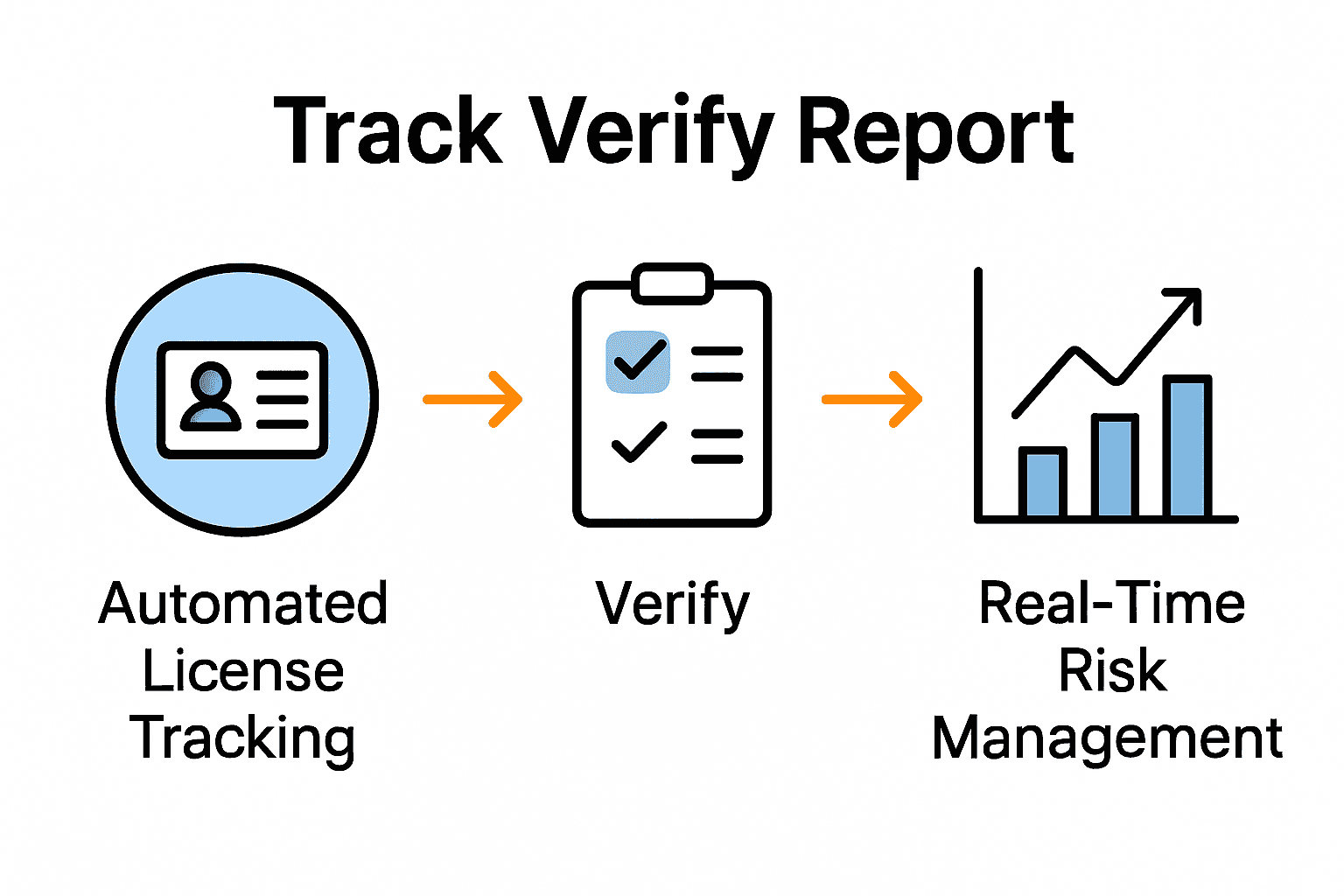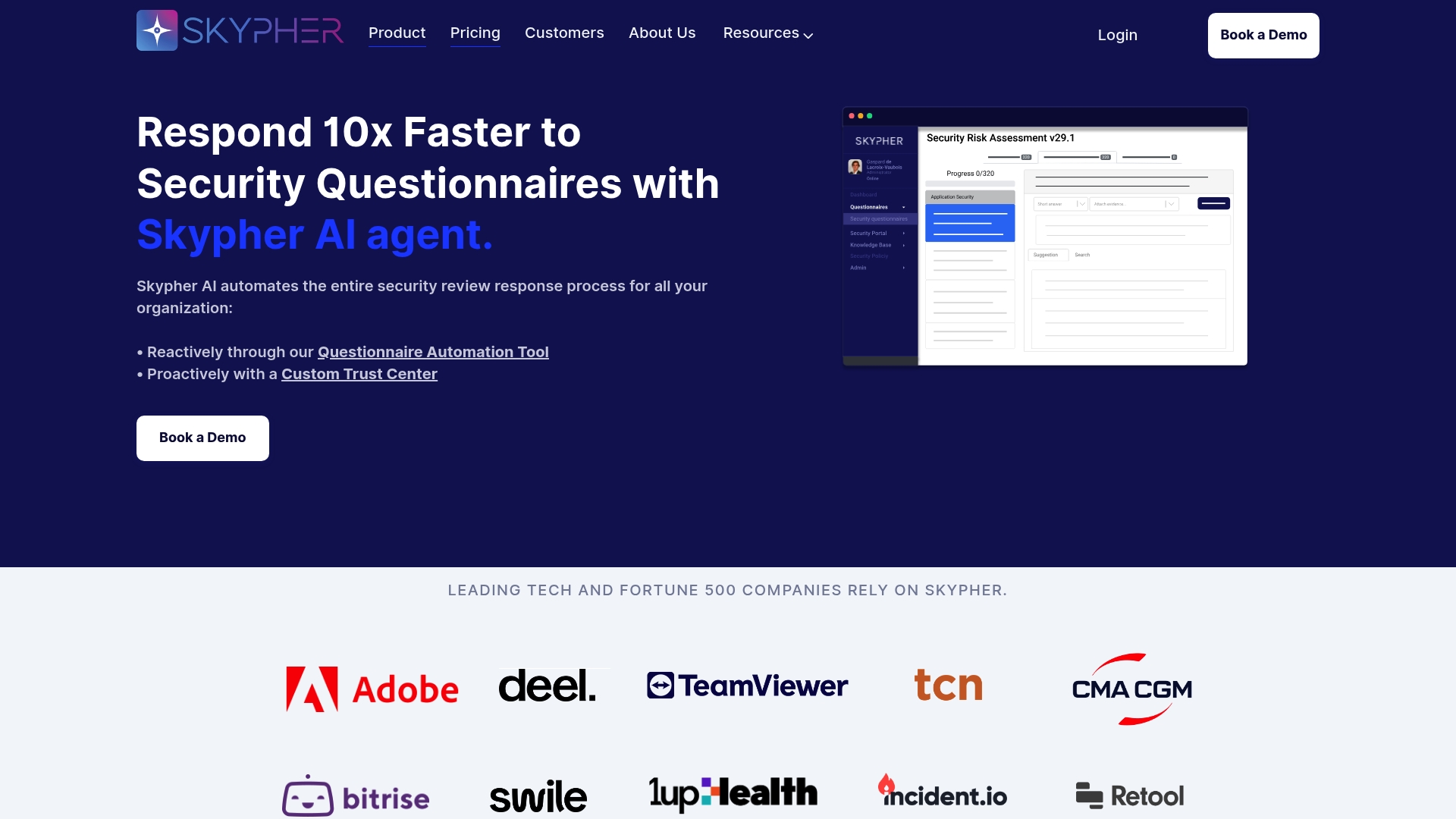Software non-compliance costs businesses an estimated $19 billion in penalties each year. This risk grows as organizations adopt more tools and juggle complex licensing rules. Software compliance software offers a smarter way to keep up, bringing order to digital chaos and protecting companies from costly mistakes. With automated tracking and real-time insights, these solutions let teams focus on innovation while staying on the right side of the law.
Table of Contents
- Defining Software Compliance Software
- Types And Key Features Explained
- Integration With Enterprise Systems
- Automating Security Reviews And Audits
- Mitigating Risks And Ensuring Accuracy
Key Takeaways
Defining Software Compliance Software
Software compliance software is a specialized technological solution designed to help organizations manage and monitor legal, regulatory, and licensing requirements associated with their software ecosystem. According to research from arxiv, these tools are critical for developers to navigate complex software licensing landscapes and prevent potential legal and financial risks.
At its core, software compliance software serves multiple strategic purposes. As highlighted by snu, these solutions go beyond mere functional requirements and provide comprehensive frameworks for managing software assets across various industries. Key functionalities typically include:
- Automated license tracking and verification
- Risk assessment and mitigation strategies
- Continuous monitoring of software usage and permissions
- Generating compliance reports and audit trails
- Managing open-source software license adherence
For organizations, implementing robust software compliance software is not just a technical necessity but a critical business strategy. These tools help prevent unauthorized software usage, reduce legal exposure, and ensure that companies maintain alignment with industry regulations and licensing agreements. By providing real-time insights and automated compliance checks, such software empowers businesses to proactively manage their software ecosystem, reducing potential financial and reputational risks associated with non-compliance.

Types and Key Features Explained
Software compliance software encompasses various specialized solutions designed to address different organizational needs. According to Sustainable Business Toolkit, these platforms share critical features that enable businesses to streamline complex compliance management processes.
The primary types of software compliance software can be categorized into several strategic classifications:
- Licensing Compliance Tools
- Track and verify software license agreements
- Monitor usage and permissions
- Prevent unauthorized software deployments
- Regulatory Compliance Platforms
- Ensure adherence to industry-specific regulations
- Automate reporting and documentation
- Provide real-time compliance status updates
- Risk Management Solutions
- Identify potential compliance vulnerabilities
- Assess and mitigate software-related risks
- Generate comprehensive risk assessment reports
As highlighted by Sustainable Business Toolkit, these software solutions offer remarkable benefits including efficient resource allocation, enhanced risk management, and improved organizational collaboration. Modern compliance software goes beyond simple tracking, transforming into intelligent systems that provide proactive insights, predictive analytics, and scalable frameworks adaptable to evolving technological and regulatory landscapes.
Key features that differentiate advanced software compliance solutions include AI-powered monitoring, seamless integration capabilities, customizable reporting mechanisms, and the ability to handle complex multi-platform environments.

Organizations can now leverage these sophisticated tools to transform compliance from a potential administrative burden into a strategic business advantage.
Integration With Enterprise Systems
Enterprise system integration represents a critical capability for modern software compliance solutions. Research from Springer highlights the importance of developing robust approaches that seamlessly connect compliance requirements with existing technological infrastructures.
Effective integration strategies typically involve multiple key approaches:
- API-Based Connections
- Direct system-to-system communication
- Real-time data exchange
- Secure authentication protocols
- Middleware Platforms
- Facilitating communication between disparate systems
- Standardizing data formats
- Enabling cross-platform compatibility
- Cloud-Based Integration
- Centralized compliance management
- Scalable infrastructure
- Enhanced accessibility
According to arxiv, advanced integration techniques now leverage annotation-based static analysis to embed compliance measures directly into software development processes. This approach transforms compliance from a standalone function into an intrinsic part of the technological ecosystem.
The most sophisticated software compliance solutions offer comprehensive integration capabilities that extend beyond traditional boundaries. These systems can now connect with enterprise resource planning (ERP) platforms, customer relationship management (CRM) tools, human resources systems, and specialized industry-specific software. By providing flexible, adaptive integration frameworks, organizations can create a unified compliance environment that reduces manual intervention, minimizes potential errors, and ensures consistent regulatory adherence across complex technological landscapes.
Automating Security Reviews and Audits
Security review automation represents a transformative approach to managing organizational compliance and risk assessment. As highlighted by arxiv, Integrated Solution Modeling Software introduces a groundbreaking paradigm for systematically enhancing information security audit processes through advanced technological interventions.
The core components of automated security review systems typically encompass several critical functionalities:
- Continuous Monitoring
- Real-time vulnerability detection
- Automated risk scoring
- Comprehensive threat landscape analysis
- Comprehensive Assessment
- Standardized evaluation frameworks
- Cross-platform compatibility
- Detailed compliance documentation
- Intelligent Analysis
- Machine learning-powered insights
- Predictive risk modeling
- Adaptive security recommendations
According to Wikipedia, software audit reviews represent an independent examination process designed to assess organizational compliance with established standards and regulatory requirements. By leveraging automation, these reviews transform from manual, time-consuming processes into dynamic, intelligent systems that provide instantaneous insights and actionable intelligence.
Modern automation technologies enable organizations to streamline GRC audit processes with unprecedented efficiency. These sophisticated platforms integrate advanced algorithms, machine learning capabilities, and comprehensive data analysis tools to create a holistic approach to security reviews. By eliminating manual interventions, reducing human error, and providing real-time comprehensive assessments, automated security review systems empower organizations to proactively manage their security posture, identify potential vulnerabilities, and maintain robust compliance frameworks across complex technological ecosystems.
Mitigating Risks and Ensuring Accuracy
Risk mitigation in software compliance represents a critical strategic approach for organizations seeking to protect their technological infrastructure. According to Wikipedia, comprehensive verification and validation processes are essential for ensuring that software meets precise specifications and fulfills its intended purpose.
Key strategies for effective risk mitigation include:
- Proactive Assessment
- Comprehensive risk identification
- Predictive threat modeling
- Regular vulnerability scanning
- Compliance Frameworks
- Standardized evaluation protocols
- Multi-layered security checks
- Continuous monitoring systems
- Data Integrity Mechanisms
- Advanced encryption techniques
- Secure authentication protocols
- Real-time anomaly detection
As detailed by Wikipedia, software quality assurance practices play a pivotal role in monitoring engineering processes to ensure strict adherence to defined standards. These approaches transform risk management from a reactive stance to a proactive, intelligence-driven strategy.
To mitigate vendor management risks effectively, organizations must implement sophisticated compliance software that goes beyond traditional checklist approaches. Advanced systems now leverage artificial intelligence, machine learning algorithms, and comprehensive data analysis to create dynamic risk assessment frameworks. By integrating real-time monitoring, predictive analytics, and adaptive security protocols, these solutions enable businesses to identify potential vulnerabilities, prevent compliance breaches, and maintain robust technological ecosystems with unprecedented precision and efficiency.
Simplify Software Compliance With AI-Powered Automation
Managing complex software compliance challenges like licensing verification, regulatory adherence, and risk mitigation requires precision and speed. This article highlights common pain points such as continuous monitoring, comprehensive auditing, and integration with enterprise systems — essentials for avoiding costly mistakes and vulnerabilities. Imagine having a solution that not only accelerates these processes but also enhances accuracy and team collaboration through real-time insights.

Discover how Skypher’s AI Questionnaire Automation Tool addresses these exact challenges. Designed for medium to large organizations in tech and finance, Skypher automates security questionnaire responses, integrates seamlessly with popular platforms like ServiceNow and Slack, and supports multi-format document parsing with superior AI models. Start reducing your compliance workload and speed up audits today with Skypher. Learn more about the benefits of our Collaboration and Real-Time Integration and explore how our Custom Trust Center can boost your compliance confidence now.
Frequently Asked Questions
What is software compliance software?
Software compliance software helps organizations manage and monitor legal, regulatory, and licensing requirements associated with their software. It prevents unauthorized use, reduces legal risks, and ensures alignment with industry regulations.
What are the key features of software compliance software?
Key features include automated license tracking, risk assessment, continuous software usage monitoring, compliance report generation, and management of open-source software licenses.
How does software compliance software integrate with existing enterprise systems?
It utilizes API-based connections, middleware platforms, and cloud-based integration, allowing seamless communication between systems and real-time data exchange, ensuring consistent regulatory adherence across technological infrastructures.
How does automated security review contribute to risk mitigation in software compliance?
Automated security reviews provide continuous monitoring, standardized assessments, and intelligent analysis, helping organizations to identify vulnerabilities, assess risks, and ensure compliance more efficiently than manual processes.
Recommended
- 7 Essential Steps for a Security Compliance Checklist
- Understanding the GRC Framework: Key Concepts Explained
- 7 Essential Tips for Every GRC Analyst to Succeed
- Understanding GRC Cyber Security: Concepts and Importance
- Understanding IT Compliance Requirements for Businesses - TECHTRON
- Understanding the Compliance Management System for Businesses | Gammatica





